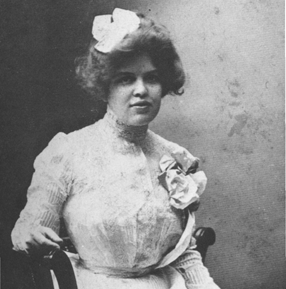Saying of Il Haboul
Guardian of the Treasure of Solomon
And Keeper of the Prophet’s Armour
My tent
A vapour that
The wind dispels and but
As dust before the wind am I
Myself.
This poem is in the public domain. Published in Poem-a-Day on August 28, 2022, by the Academy of American Poets.
“Saying of Il Haboul” appeared in Adelaide Crapsey’s Verse (The Manas Press, 1915). The poem is one of Crapsey’s cinquains, a form of her own invention that, as poet Louise Townsend Nicholl describes, in her review of Crapsey’s Verse published in the New Republic vol. 426 (January 31, 1923), follows a format of “five lines, one-stress, two-stress, three-stress, four-stress, and then caught back suddenly again to one-stress [. . .].” Shortly after the publication of Verse, in his critical anthology The Poetic Year for 1916 (Small, Maynard, and Company, 1917), William Stanley Braithwaite lauded Crapsey’s cinquains as “marvellously chiselled gems.” About this cinquain, Susan Sutton Smith writes, in her introduction to The Complete Poems and Collected Letters of Adelaide Crapsey (State University of New York Press, 1977), that a “juxtaposition or superposition forms the poem’s heart: the vulnerability and impermanence of the speaker and his tent (body) are set against the eternal forces of the wind and the dust whirled before it. The title of the cinquain adds a further ironic contrast: the evanescent speaker, only a little more permanent than his flimsy dwelling, announces himself as a symbol of security, an officially recognized bulwark protecting the precious and perishable against change [. . .].”

